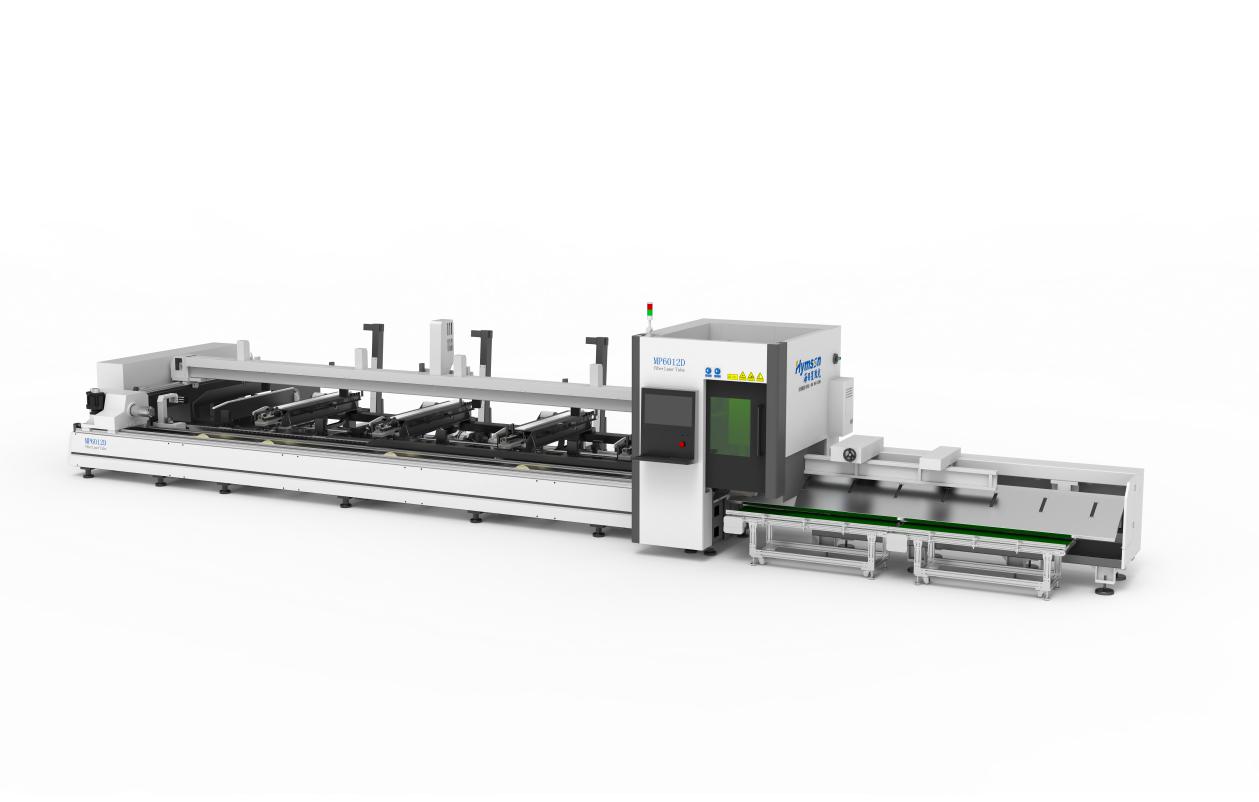在当今精密制造时代,激光管切割机是推动各行业效率和准确性的不可或缺的工具。这些尖端机器利用激光技术的力量,以无与伦比的精度精确地塑造和修剪金属管。为了深入了解激光管切割机的世界,让我们探索它们的组件、工作原理、应用等。
激光切管机的组成部件
激光管切割机由几个精心设计的关键部件组成,以确保最佳性能和精确的切割能力。
- 其核心是激光源,产生切割各种材料所必需的高强度光束。
- 管道处理系统有助于无缝操作和定位工件,而切割头则装有复杂的光学元件,可实现精确的光束聚焦和传输。
- 控制系统协调整个切割过程,以最高的精度协调动作和调整。
- 此外,强大的冷却系统可防止过热,确保稳定的性能,而集成的安全功能则优先考虑操作员的健康。
激光管切割机的类型
激光管切割机有不同的配置,每种配置都针对特定的制造要求量身定制。光纤激光管切割机配备先进的光纤激光技术,速度快、精度高,是复杂切割任务的理想选择。
相反,二氧化碳激光管切割机利用二氧化碳激光器的功率,可灵活处理各种材料和厚度。对于那些寻求性能和灵活性之间平衡的人来说,混合激光管切割机结合了光纤和二氧化碳技术的优势,可满足不同的生产需求。
工作原理
激光管切割机的运行围绕着精心策划的一系列事件进行,首先是产生高度聚焦的激光束。
然后将该光束导向工件,精确定位并夹紧在切割区域内。当光束接触时,会产生强烈的热量,沿着指定的切割路径熔化和蒸发材料。
同时,管材实时操控,确保最佳切割角度和轨迹。整个过程中,先进的监控系统提供实时反馈,实现精确调整,以保持切割精度和效率。
应用
激光管切割机的多功能性遍及众多行业,彻底改变了制造工艺和产品设计。在汽车领域,这些机器有助于以无与伦比的精度制造复杂的底盘部件和排气系统。同样,在航空航天应用中,激光管切割机在制造轻巧而坚固的飞机和航天器结构方面发挥着关键作用。
此外,在建筑领域,这些机器有助于制造定制的金属型材和框架,加快施工进度,同时确保结构完整性。除了这些行业之外,激光管切割机还应用于家具制造、医疗设备生产等领域,展示了其多功能性和适应性。
激光管切割机的优势
采用激光管切割机可以带来超越传统制造方法的无数好处。
- 首先,它们能够实现高精度切割,从而确保最少的材料浪费并最大程度地提高生产效率。
- 此外,它们能够灵活地处理各种材料,包括不锈钢、铝甚至特殊合金,使制造商能够探索新的设计可能性并扩大其产品供应。
- 此外,这些机器固有的自动化功能简化了生产工作流程,降低了劳动力成本并提高了整体生产力。
- 加上更快的生产速度,激光管切割机成为企业在当今动态的市场环境中寻求获得竞争优势不可或缺的资产。
购买前要考虑的因素
在投资激光管切割机之前,企业必须仔细评估几个关键因素,以确保获得最佳投资回报。
首先,预算分配应与所需的机器规格和功能相匹配,同时考虑前期成本和长期运营费用。此外,考虑生产量和要求也是必不可少的,因为它决定了满足需求所需的机器尺寸和容量。
材料类型和厚度在选择合适的激光技术和功率输出时也起着至关重要的作用。此外,还必须考虑可用空间和设施限制,以确保无缝集成到现有工作流程中。最后,评估售后支持和服务的可用性对于解决购买后可能出现的任何维护或技术问题至关重要。
结论
激光管切割机代表了精密制造领域的范式转变,为各个行业提供了无与伦比的精度、多功能性和效率。随着技术的不断发展,对于寻求在竞争日益激烈的环境中蓬勃发展的企业来说,采用激光技术和自动化方面的最新进展至关重要。
分享这篇文章:


